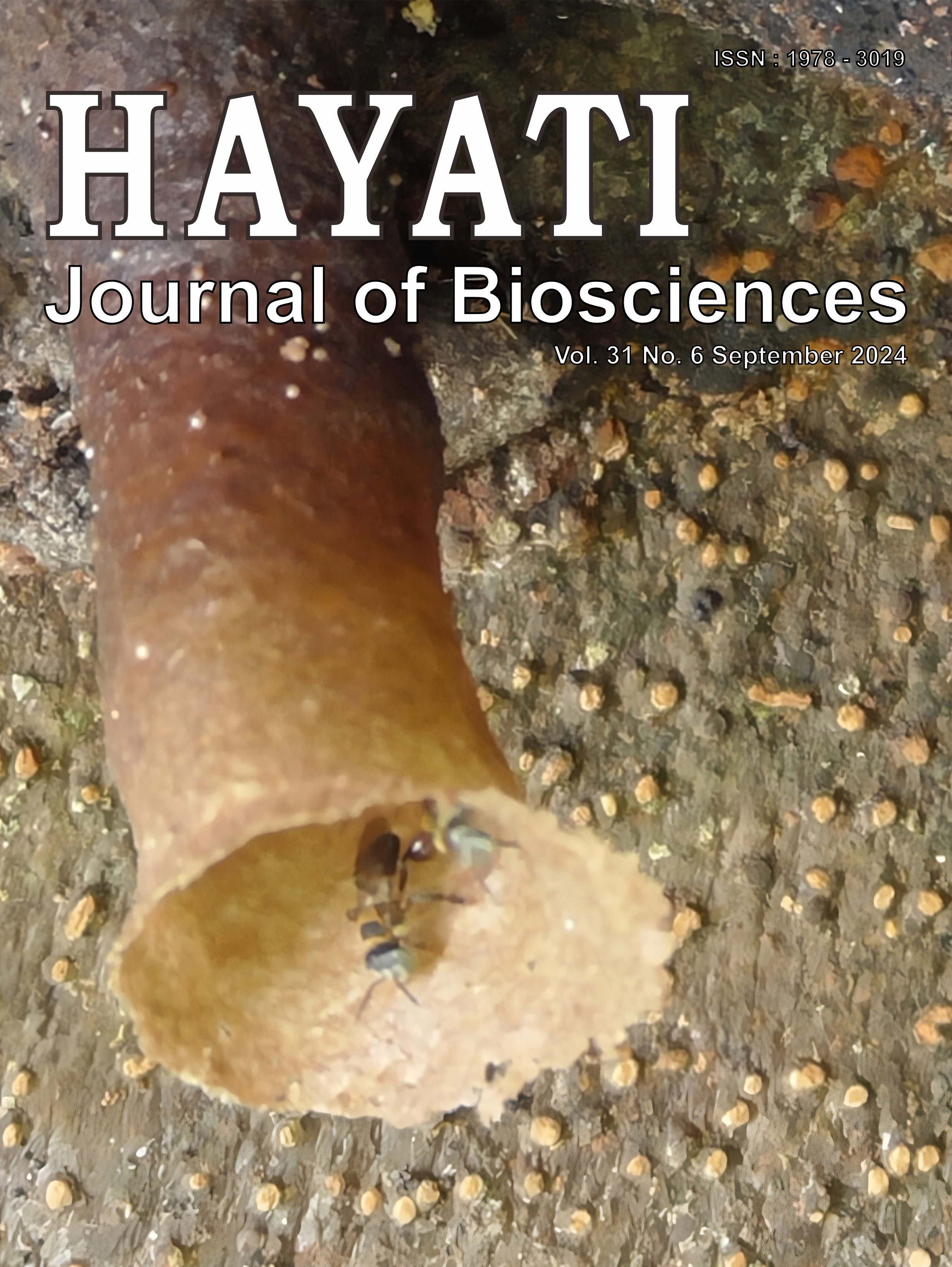Variation and Distribution of the Sulawesi Giant Rat (Paruromys dominator) Based on Morphological Approaches
Abstract
Correlations between natural geographic boundaries and variations in organisms' morphology have been well-documented in Sulawesi Island, which has a unique geological history and hundreds of endemic species. One of the widely distributed species of small mammals is Sulawesi giant rat (Paruromys dominator). Considering the geographic condition of Sulawesi, this species is a suitable model for studying geographic influences on morphological change. Moreover, there are no comprehensive studies on this species. Previous studies cannot fully explain the variability due to the lack of representative samples. Here, we measure 19 skull characteristics for 131 adult complete-skull specimens from six distribution areas in Sulawesi. We investigate the variation in skull characteristics using agglomeration nesting (AGNES) for cluster analysis and the standardized major axis (SMA) for allometry analysis. Our results show that P. dominator can be categorized into two groups, but distribution areas, elevation, or sex do not influence those. P. dominator in group 1 had a larger skull size than group 2. The two groups can be distinguished from four characteristics: breadth of mesopterygoid fossa (BMF), breadth of first upper molar (BM1), length of the auditory bulla (LB), and breadth of incisive foramina (BIF). The BMF and BM1 are related to mastication, and the LB and BIF are related to communication. We propose that the skull variation of this species is not correlated with geographical barriers but more clearly correlated with their feeding habits, mating behavior, and ability to escape predation. These findings were useful for future studies on the taxonomic status of P. dominator.
Downloads
Copyright (c) 2024 Endah Dwijayanti, Bambang Suryobroto, Kanthi Arum Widayati, Anang Setiawan Achmadi

This work is licensed under a Creative Commons Attribution-NonCommercial 4.0 International License.
HAYATI J Biosci is an open access journal and the article's license is CC-BY-NC. This license lets others distribute, remix, tweak, and build upon author's work, as long as they credit the original creation. Authors retain copyright and grant the journal/publisher non exclusive publishing rights with the work simultaneously licensed under a https://creativecommons.org/

























.png) IPB University
IPB University Department of Biology
Department of Biology The Indonesian Biological Society
The Indonesian Biological Society 

